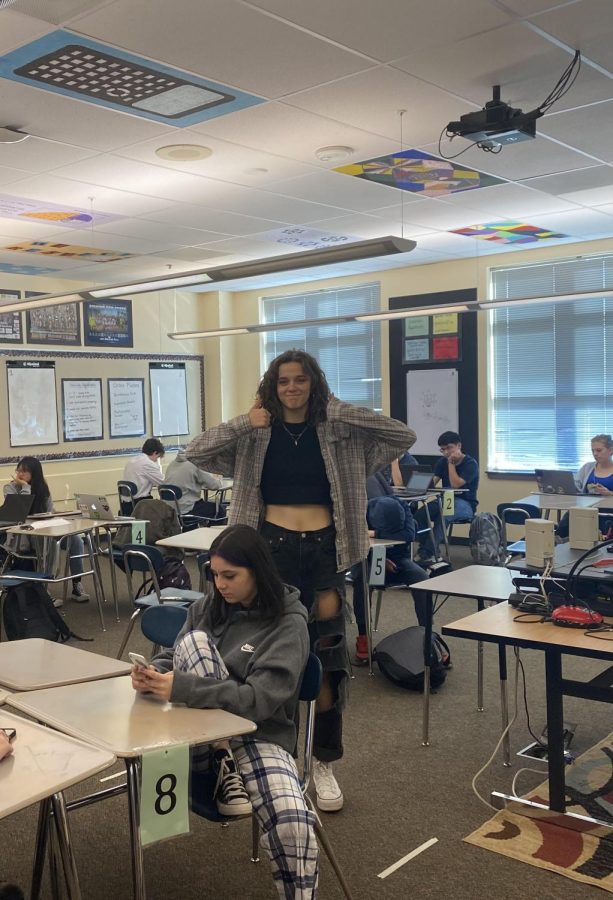Seating arrangements and learning
Students and teachers express their seating preferences
Seating arrangements in Mrs. Lockwood’s algebra class. She splits students up in small groups.
Seating arrangements vary at Wilsonville High School– some teachers follow certain arrangements, while others do the complete opposite. Students and teachers are here to share how their learning can benefit from the format of their seating.
Harold Coller, a chemistry and forensics teacher here at WVHS, has an acquired preference when it comes to his seating arrangements. Mr. Coller approaches seating arrangements as a way to diversify groups of people. He tries not to “make a one gender table,” or “a one ethnic group table, because people tend to self isolate that way.”
Mr. Coller, attempts to leave an impact on his students when it comes to connecting with one another, “because it’s important that [they] learn that when [they] leave here and go into the real world, [they] have to be able to work with all kinds of people.”
Jasmyn Bilon Nguyen, a sophomore, likes to sit with people because she likes “to converse and make more friends that way.” Bilon Nguyen thinks that depending on the student and the class, students can either benefit from a larger selection of students to work with, or individually.
Jenna Campbell, a sophomore, enjoys sitting with her friends because they “keep [her] entertained,” but she finds that they can also be a distraction and conversation can quickly prevent her from completing assignments.
Bianca Garretson, a junior, tends to lean towards sitting “in the middle or the back,” simply because she prefers it. She also thinks that it’s important to “work with people, because eventually in the future, you never know when you might need to work with people that you don’t or do want to work with.”
Both students and teachers have particular preferences and likings towards seating arrangements, but the initial motive is to ensure that students are successful in school.











